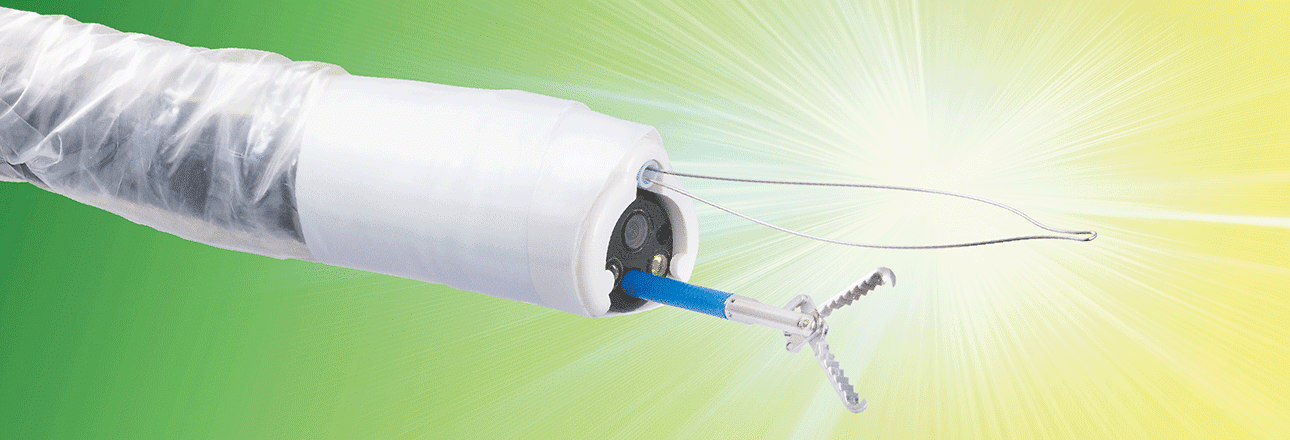The novel ESD+ technique uses the external additional working channel (AWC®), which allows for use of additional endoscopic instruments and thereby facilitates grasping and mobilization of the lesion. A preclinical study evaluated the technique in the EASIE-R1 Simulator (explanted pig stomach, 64 lesions). Especially in retrograde lesions ESD+ was significantly faster with a median of 22.5 vs 34.0 min in 3 cm retrograde lesions (p = 0.002) and 34.5 vs 41.0 min (p = 0.011) in 4 cm retrograde lesions. Muscularis damage occurred in one case with ESD+ technique and in 6 cases with conventional ESD (3.13 % vs 18.75 %, p = 0.045).
R. F. Knoop et al., Department of Gastroenterology and Gastrointestinal Oncology, University Medical Center, Georg-August-University, Goettingen, Germany, conducted a prospective study aiming to systematically evaluate the novel ESD+ technique and to compare it to conventional ESD. The ESD+ technique is characterized by the use of the external additional working channel (AWC), which allows bimanual working with a standard endoscope. Thereby for example the combination of grasper and ESD knife or ESD coagulation dissector is made possible. In contrast to a dual channel endoscope with a close and fixed distance between the channels, the use of the AWC enables triangulation and thereby intraluminal tissue traction, flexibility and a better overview.
The study was conducted in the EASIE-R simulator, a pre-clinical ex-vivo animal model using porcine stomachs. Standardized lesions of 3 cm or 4 cm were set in antegrade or retrograde positions. Overall 64 procedures were performed (32 with ESD+ and 32 with conventional ESD, thereof 16 with antegrade and 16 with retrograde position, respectively). The ESD+ technique as well as the conventional ESD technique were both reliable and showed en-bloc resection rates of 100 %. Across all groups, ESD+ was associated with significantly shorter procedural time compared to conventional ESD (24.5 vs 32.5 min, p = 0.025). Especially in retrograde lesions ESD+ was significantly faster with a median of 22.5 vs 34.0 min in 3 cm retrograde lesions (p = 0.002) and 34.5 vs 41.0 min (p = 0.011) in 4 cm retrograde lesions. No perforations occurred, neither with ESD+ nor with conventional ESD. Muscularis damage occurred in one case with ESD+ technique and in 6 cases with conventional ESD (3.13 % vs 18.75 %, p = 0.045).
The authors concluded that this preclinical study suggests that ESD+ allows faster and safer resection of flat gastric lesions compared to conventional ESD. This may be particularly relevant for difficult lesions in retrograde positions.
Endoscopic submucosal dissection with an additional working channel (ESD+): a novel technique to improve procedure time and safety of ESD
Knoop RF, Wedi E, Petzold G, Bremer SCB, Amanzada A, Ellenrieder V, Neese A, Kunsch S.
Surg Endosc. 2020 Jul 16. doi: 10.1007/s00464-020-07808-w.


 English
English  Français
Français 